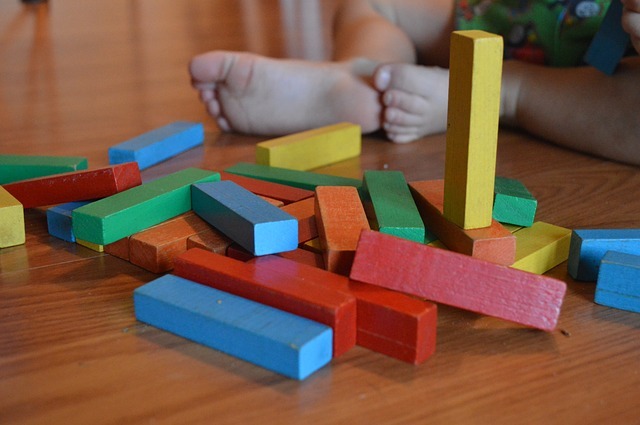There’s a lot that parents can learn from the experts who wrangle kids for a living, especially when it comes to organizing our spaces to accommodate children. School rooms are full of toys, books, play and dress-up areas, and supplies. Somehow, these talented teachers manage to keep a tidy, educational play space with multiple children, activities, and equipment.These superstar organizing solutions from daycare workers and child development experts will help you conquer the household chaos that comes with kids.
Create Zones
Experienced teachers designate areas for different activities which determine the furniture and storage required. Reading nooks typically have bean bags or comfortable chairs, task lighting, and easy access to a bookshelf.Group like toys near one another in similar containers sorted by color. Give everything a specified location or home, so everyone knows where items belong. Sort Lego bricks in color-matched bins to make finding them easy. Toys that kids play with should occupy the same shelf or tub for easy access and clean-up. For example, in an Early learning centre you’ll find the Playdoh, rolling pins, and cookie cutters located together.
Storing Kids’ Things in Adult Furniture
If you’ve ever stepped on a Lego, you’ll appreciate the value of kid-friendly storage. Kids’ classrooms have an abundance of shelving and open containers strategically placed at eye level. Woods Furniture New Zealand has a lot of great organizing options.Storing children’s toys doesn’t mean you have to use plastic tubs in primary colors. Choose storage furniture and accessories that are kid-friendly, but complement your d or. Organize with double-duty furniture like storage ottomans, or use an elegant console table with sturdy baskets. Choose containers small enough to be manageable when full. Containers without lids are ideal for stashing small books, blocks, cars, and dinosaurs.
Curate Your Collections
Teachers continually curate toys, craft items, and books to keep their room organized. They don’t have an emotional attachment to items but are creative enough to re-create a lesson or activity with different components.As your children grow and gain new interests, toys will accumulate. Let go of toys, crafts, and books that your kids have outgrown. It’s important to cull the collection to keep kids from being overwhelmed by the selection. Rotate which toy containers are out at the same time to encourage imaginative play.
Color Coordinate
Kids know their colors before they can read, which makes organization by color especially useful for wee ones. Apply colored stickers to small toys like cars to match the bin in which they belong or color-code entry storage for each child.
Arrange Artwork
Your budding artists will quickly overwhelm your space with masterpieces unless you have ample display space. Designate vertical wall space for artwork and affix clamps to hold it, or invest in a series of frames which both store and display their latest creations.
Successful systems are easy to maintain
Teachers are superstars when it comes to organizing spaces for children. Managing activities, craft supplies, toys, and books whilst keeping educational spaces clear takes a lot of commitment. Storage and labeling solutions are crucial components of a successful organizational system, while keeping collections manageable limits chaos.
I’m a 20-something stay-at-home mother and wife. I have an amazing husband, a beautiful daughter, two loving dogs, and a lazy cat. I wouldn’t change my life for anything! I love to read, listen to music, cook and blog!

Thank you for this post. Good luck.
Thanks & Regards,
From Call Center Software.